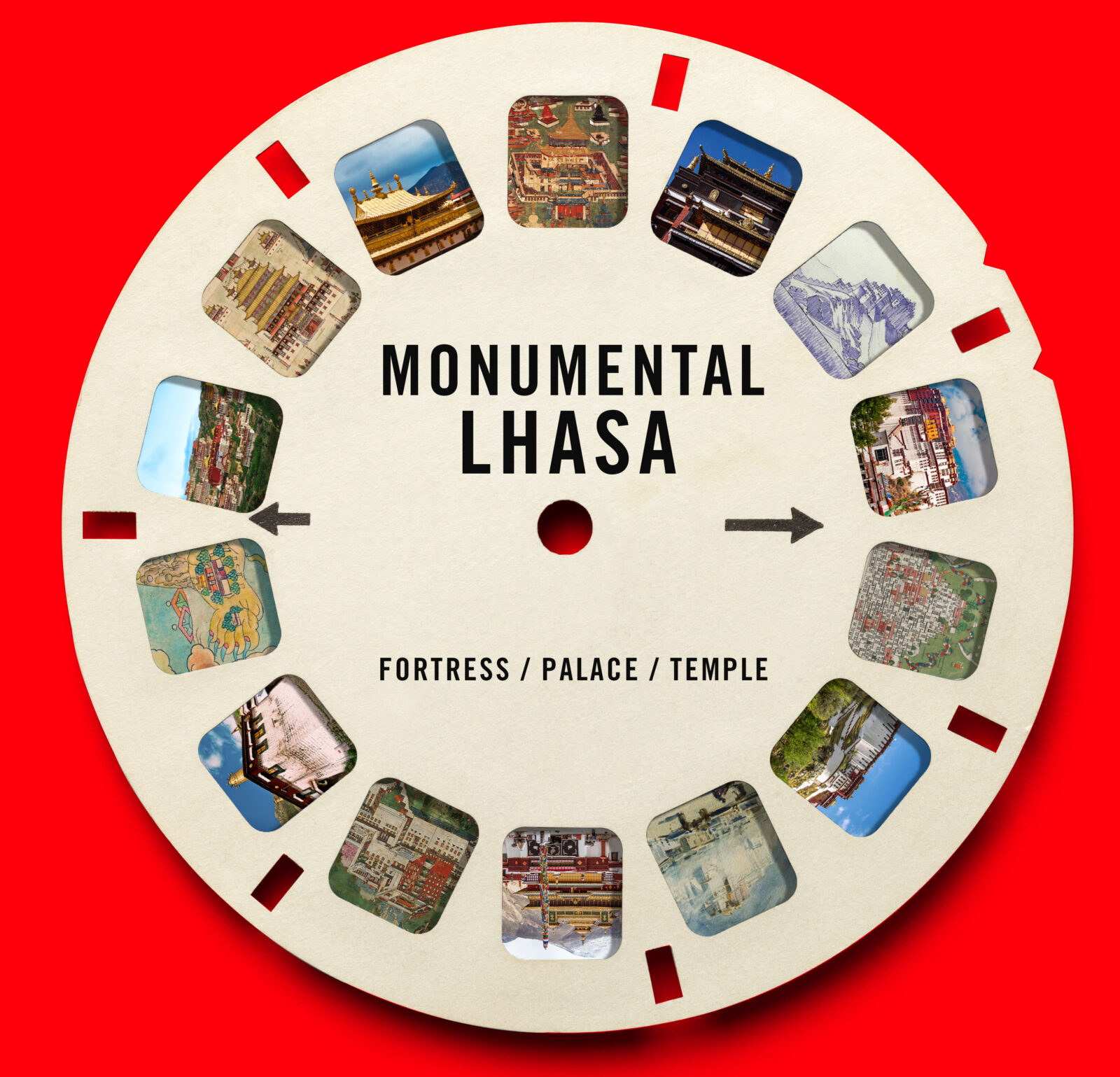Monumental LhasaFortress, Palace, Temple
Rubin Museum
150 W. 17th St., NYC

View-Master Reel (details, clockwise from left): Ganden Monastery, Pixabay | Samye Monastery, The
British Library, Add.Or.3017, folio 3 | Jokhang Temple, Antoine Taveneaux, 2008 | Samye Monastery,
The Newark Museum, Purchase 1920 | Potala Palace, Antoine Taveneaux, 2010 | Potala Palace, The
British Library, WD1216 | Tashilhunpo Monastery, Pixabay
Architectural landmarks act as anchors for the identity of a place as well as focal points for associated stories and memories. Much like the Eiffel Tower is the pervasive symbol of France and the Statue of Liberty represents New York City, beginning in the 17th century, key Tibetan monuments became powerful visual icons of Lhasa, the holy capital of Tibet.

